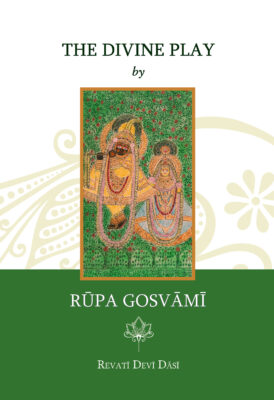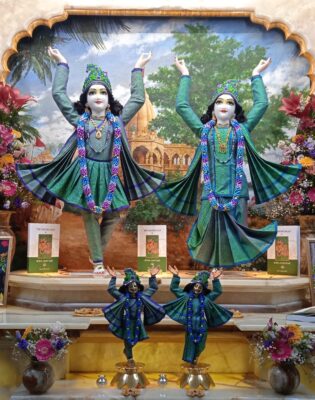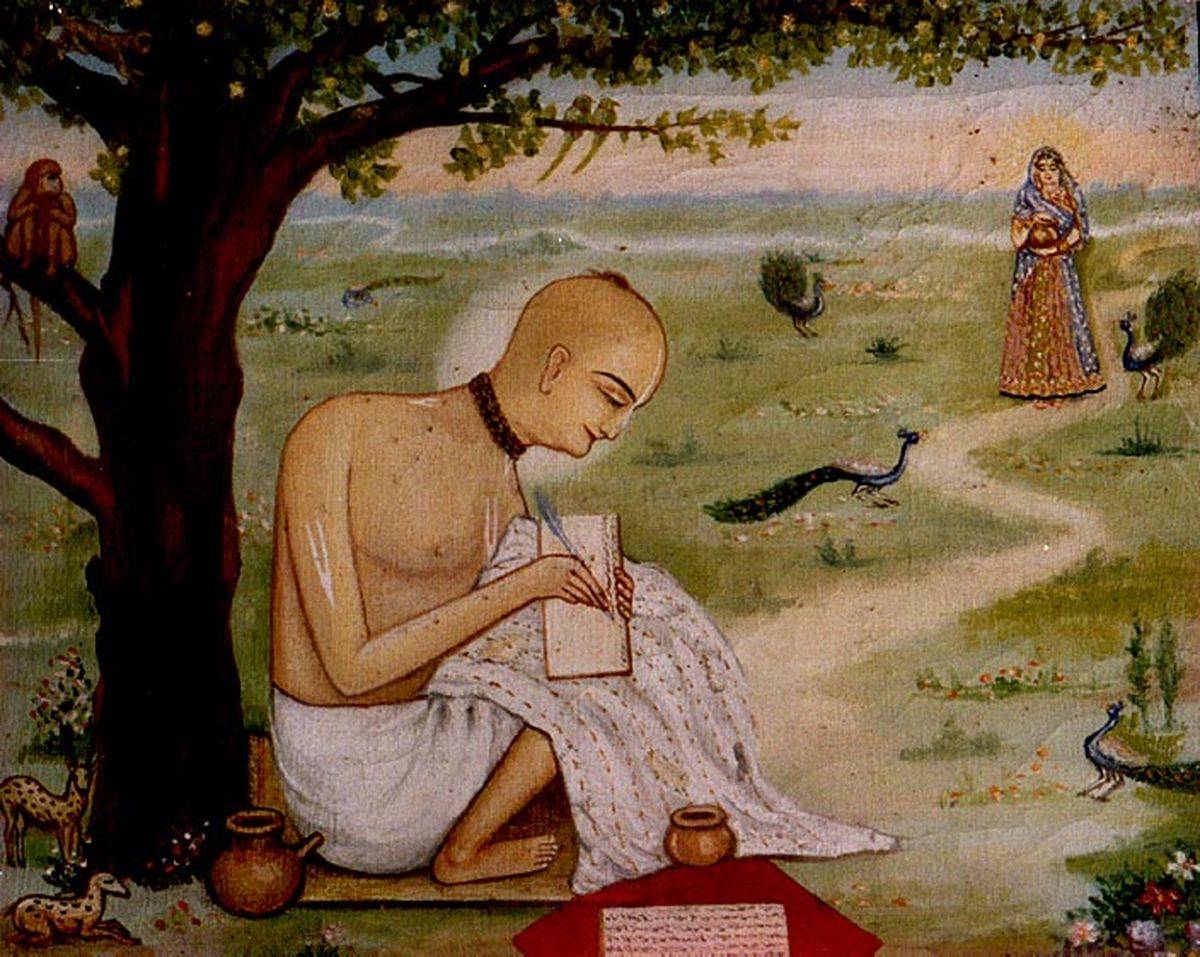New publication by Revatī Devī Dāsī
www.kadamba.hu
The aim of the book in review, The Divine Play by Rūpa Gosvāmī, is to make Śrīla Rūpa Gosvāmī’s drama, the Vidagdha-mādhava, accessible to the widest possible audience.
The description of Rādhā and Kṛṣṇa’s pastimes is literature of the highest order, an articulation of ultimate reality. In fact, the Vidagdha-mādhava is not literature, not a play, but a living divine act. It is a stream of nectar that can ease the miseries of material existence, elevate one from the repetitive cycle of birth and death, and bless one with the sweetest elements of divine love.

Why is this work so difficult to approach?
The Supreme Lord’s inconceivable pastimes are so distant that they seem almost unattainable for people bound by the shackles of karma. At the same time, these narratives are descriptions of the Lord’s eternal abode, where we naturally belong, where we come from, and for which we naturally yearn in the depths of our hearts. The subject matter of this book is far away in terms of our qualifications, but it is as near as our own hearts, for it is where we originally come from.
Another difficulty that may arise is that when reading about the divine pastimes and passionate feelings of Śrī Kṛṣṇa and Rādhikā as conveyed in the pages of Vidagdha-mādhava, the uninitiated may think that they are engaging with a text about worldly love. Even devotees of Kṛṣṇa who practice self-restraint are sometimes afraid to read works such as this, thinking it too advanced or beyond their realisation. In reality, however, Rādhā is not an ordinary woman, but is actually Kṛṣṇa’s energy, his love personified. Indeed, Rādhā and Kṛṣṇa are one and the same reality, but they have taken two forms to enjoy each other by experiencing different flavours of love. Their passion is a sacred fire that purifies and burns away the last germs of worldly desires.
Talking about difficulties, we must also consider that the Vidagdha-mādhava is written in Sanskrit and Prakrit, full of difficult-to-translate puns and ambiguous statements, and bears the formal requirements of a play that follows the intricate and complex rules of Vedic dramatic writing. When reading English translations, we often get stuck: the plot, rich in unexpected turns and poetic ornamentation, is difficult to follow; we lose the thread of the narrative while pondering the deep meaning or admiring the beauty of individual verses. The lack of clear wording makes the reading obscure. It is difficult to understand where the plot starts and where it is going, what it really wants to say, and what its essential purpose is. We might read it out of curiosity, but it is likely far from our favourite book. We may even put it aside after a few pages because it is “not enjoyable” in the usual sense.

We put aside the most precious treasure in the world, unaware that it sits right in our hands. The Divine Play by Rūpa Gosvāmī is an attempt to make the work accessible with an insight chiefly relying on Śrī Caitanya-caritāmṛta’s narrations, and giving the reader a summary version of the play in English.
After offering some biographical data, the first part of The Divine Play by Rūpa Gosvāmī summarises the circumstances under which the Vidagdha-mādhava was composed and sheds light on the twenty-nine verses of the drama presented by Śrī Rūpa to Śrī Caitanya and his associates in Jagannātha Purī, all mostly based on the first chapter of Caitanya-caritāmṛta’s Antya-līlā. While discussing the verses, the text provides insights into the plot of the play, the basic concepts of Sanskrit poetics and dramaturgy, the science of rasa, and other works of Rūpa Gosvāmī including their related philosophy. When we hear about the personal life of a famous man, known from afar and seemingly inaccessible, we immediately feel closer to him. The first part of the book tries to approach Vidagdha-mādhava in this spirit.
The second part offers a summary of the Vidagdha-mādhava for an English-speaking audience. Naturally, with such a summary, much is lost in terms of the original work, but we can gain quite a bit as well. If Śrī Rūpa’s work becomes accessible by tasting a drop or two of the nectar flow of Rādhā and Kṛṣṇa’s pastimes as presented here, or somehow points to the nectar ocean of the complete original work, leading the reader to investigate the text more thoroughly, this book, The Divine Play, will have fulfilled its essential mission.

